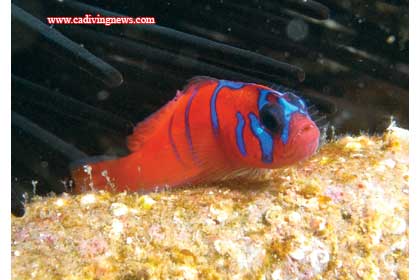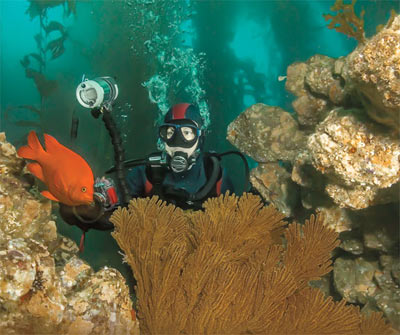While I think we should always be presented with the bad news so that we can act to reverse the negative, we must also accentuate the success stories, places where we have done right by nature.
In my nearly 40 years of diving I have seen the California seas do some pretty wild oscillations within marine life populations, unfortunately, many of them downward. But here I want to emphasize the success stories because they reinforce what we can do (or not do) to improve the situation. While many of these success stories involve an active role, most have taken place simply because we back off and let nature do what she does best — populate.
That is really the idea behind the preserve movement and implementation that has swept the state over the last several years. We are not here to somehow force the marine animals to propagate or to augment the growth. We can just stand back and watch nature work.
This works not just with marine preserves but also individual species. An excellent example is the giant black sea bass (Stereolepis gigas). Once considered critically endangered, this magnificent fish, protected since 1982, has made a dramatic comeback. Huge specimens are often seen cruising edges of kelp forests in Southern California waters. In some locations it is not unusual to see schools numbering from just a handful to over a dozen. You cannot help but know that this population recovery is from the animal’s protected status.
Another example is abalone, albeit much more modest than that of the black sea bass. The Central and Southern California ban on the take of abalone went into effect in 1997. For all practical purposes, populations of white, green, black, and pink abalone had been all but wiped out by overfishing and disease. Only a small pocket of red abalone survived at San Miguel Island. Since that time it is not unusual to see pinks at many locations around the Channel Islands. Greens have also been spotted on a regular basis. Although it has only been 15 years since the protection went into effect, these sightings call for cautious optimism. Perhaps in another 20 years it will be uncommon to not see an abalone on a Channel Islands dive. But only if we let them do what they do best — make little abalones.
Then there are success stories where we have helped nature along. White sea bass are available again for sport, partially because of farmed outgrowth programs with juveniles released into the wild and also stiffer regulations. And kelp forests off Laguna Beach are proof of yet another success story of a planting effort some years ago.
Good news is there and we can learn from it. Let’s build on our successes with strong enforcement of preserves and consider better protection for compromised species.










